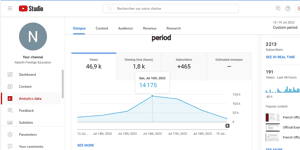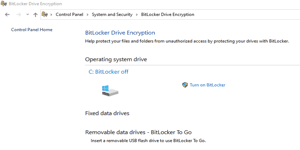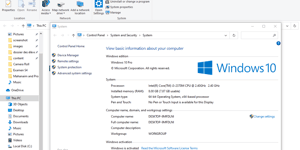With the rapid evolution of technology, choosing a computer adapted to your needs in 2025 requires taking into account several criteria. This comprehensive guide will help you understand the essential things to check to make an informed choice.
Determine your main needs
This is the fundamental step, because if you really identify your needs, you will avoid oversizing (where you would have paid for unnecessary features) or under sizing your choice (there you would have chosen a computer that lacks performance).
Categories of use:
- Basic use: Web browsing, e-mails, watching videos. No need for exceptional power.
- Office work: Use of suites such as Microsoft Office, file management. Requires a certain fluidity.
- Education: You may need a lightweight laptop with solid battery life and enough power for school tasks (research, video conferencing).
- Gaming: Requires a high-performance machine with a good graphics card, a fast processor, and a high-resolution display with a high refresh rate.
- Content creation: Video/photo editing, 3D modeling. Requires a computer with high-performance components.
- Software development: A multi-core processor, lots of RAM, and sometimes a good graphics card for environments like Unity or Android Studio.
- Mobile work: Prioritize lightness, autonomy, and good connectivity.
The essential criteria to check
Check: the processor (CPU), Random Access Memory (RAM), Storage (SSD and HDD), Graphics card (GPU), Screen, Battery, Connectivity, Brand and support.
a. The processor (CPU)
The processor plays a crucial role in speed and multitasking. Here’s what you need to know in detail:
- Generations:
- Intel: 13th and 14th generation are the most recent (example: i5-13500H).
- AMD Ryzen: The 7000 series (example: Ryzen 5 7600X) dominates with optimized performance.
- Cores and threads:
- More cores and threads = better ability to handle multiple tasks simultaneously.
- 4 cores/8 threads are enough for basic use.
- 6 to 12 cores are ideal for gamers and creators.
- Frequency and Cache:
- A high frequency (e.g. 4 GHz or higher) ensures that tasks can be completed quickly.
- A higher L3 cache (8 MB or more) speeds up access to data.
- Power consumption:
- The U-series from Intel or AMD are energy-efficient, perfect for laptops.
- The H-Series offer more power for demanding tasks.
b. Random Access Memory (RAM)
RAM is crucial for multitasking and running software smoothly.
- DDR4 vs DDR5:
- DDR5 is faster and more efficient, but more expensive.
- DDR4 remains sufficient for many uses in 2024.
- Recommended capacity:
- 8 GB: Basic, suitable for office automation.
- 16GB: Versatile, ideal for gaming and multitasking.
- 32 GB or more: Required for heavy-duty professional tasks (4K video editing, scientific calculations).
- Expandability:
- Check if the RAM is soldered or expandable. Computers with free slots for adding RAM are preferable.
c. Storage (SSD and HDD)
Storage directly affects how fast your computer is and how well it can hold your files.
- Technologies:
- SSD (NVMe): Ultra-fast, perfect for operating system and software.
- HDD: Slower, but offers large capacity at a lower cost.
- Hybrid (SSD + HDD): Combines the speed of the SSD and the capacity of the HDD.
- Recommended size:
- 256 GB SSD: Enough for light use.
- 512GB SSD: Ideal for regular users.
- 1 TB SSD or SSD + HDD combination: Creators, gamers or professionals.
- Speed:
- Prefer an NVMe SSD with read/write speeds of more than 3000 MB/s.
d. Graphics card (GPU)
A high-performance GPU is essential for gaming, content creation, or graphics calculations.
- Integrated graphics:
- Intel Iris Xe or AMD Radeon Vega: Suffice for office automation, movies or light gaming.
- Dedicated graphics cards:
- NVIDIA: RTX 4000 series for gaming and creation (e.g. RTX 4060, 4080).
- AMD Radeon: RX 7000 Series for competitive performance.
- Video Memory (VRAM):
- 4 GB VRAM: 1080p gaming.
- 8GB or more: 4K gaming or video editing.
- DLSS and Ray-Tracing compatibility:
- DLSS: Improves rendering performance.
- Ray-Tracing: Offers advanced visual effects.
e. Screen
The screen is a key element for your comfort.
- Waist:
- 13-14 inches: Portable, ideal for on the go.
- 15-16 inches: Versatile size.
- 17 inches: For creators or gamers.
- Resolution:
- Full HD (1920 x 1080): Standard and affordable.
- 2K or 4K: For sharp details, especially for graphics or movies.
- Refresh rate:
- 60 Hz: Normal use.
- 120Hz or higher: Smooth gaming or animations.
- Technology:
- IPS: Accurate colors and good viewing angles.
- OLED: Superior contrast and deep blacks.
- Touchscreen: Useful for some creative work.
f. Battery
A high-performance battery is essential for laptops.
- Capacity:
- Expressed in Wh (Watt-hour). The higher the value, the better the range.
- Optimization:
- Low-power processors and more power-hungry displays help extend battery life.
g. Connectivity
Check the available wireless ports and technologies.
- Essential Ports:
- USB-C (with Thunderbolt 4 if possible).
- HDMI or DisplayPort to connect external displays.
- SD card reader: Useful for creators.
- Wireless Technologies:
- Wi-Fi 6E for a fast and stable connection.
- Bluetooth 5.3 for better range and faster transfers.
3. Brand and support
Choose brands known for their reliability and customer service (Apple, Lenovo, Dell, HP, ASUS, MSI).
Summary of Requirements:
| Use | CPU | RAM | Storage | GPU | Screen | Autonomy |
|---|---|---|---|---|---|---|
| Office automation | i3/Ryzen 3 | 8 GB | 256 GB SSD | Integrated | Full HD, 14" | 8-10 a.m. |
| Advanced Gaming | i7/Ryzen 7 | 16-32 GB | 1 TB SSD | RTX 4060+ | 144 Hz, 15-17" | 4-6 hrs |
| Content Creation | i7/Ryzen 9 | 32 GB | 1 TB SSD | RTX 3070+ | 4K OLED, 16" | 5-8 hrs |
By following these tips, you can choose a computer that suits your needs while avoiding common pitfalls!
Share on:





